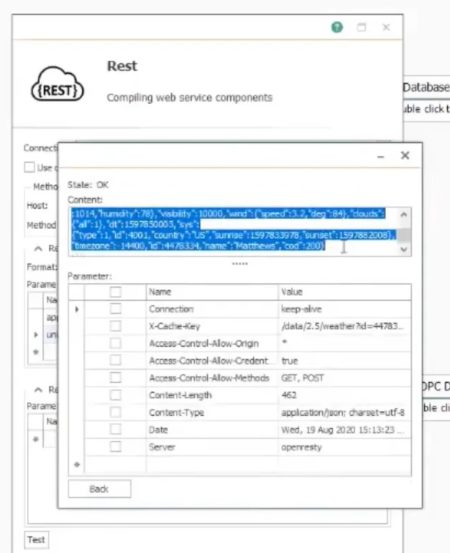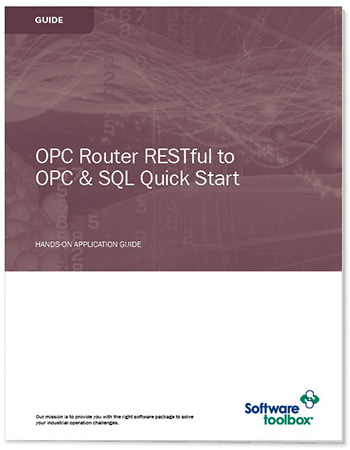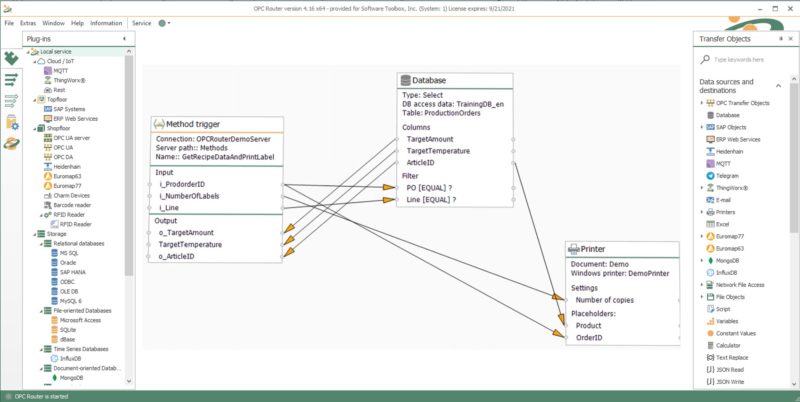SPONSORED BY: SOFTWARE TOOLBOX
Ongoing digital transformation and operational visibility initiatives continue to demand the integration of different systems using different technologies. As OPC UA continues to grow in adoption, users are starting to encounter devices that leverage more advanced features such as OPC UA methods. OPC UA methods provide a flexible means for OPC UA clients to request functionality from an OPC UA server, such as requesting recipe data from ERP systems such as SAP, performing complex calculation on raw data, triggering a label print using input from a database, and so much more.
Additionally, a wide variety of systems that leverage REST continue to emerge as data sources, driving the need for converting that data to OPC UA for consumption by client applications. Varying network reliability and the need to integrate systems that are not always connected add a layer of complexity that requires local storage of data and the ability to then forward it on when network connections become available.
The OPC Router software product brings these varying technologies together in one off-the-shelf software solution that is configured through visual forms and workflows to route data between OPC UA, OPC UA methods, REST, SQL databases, SAP and more.
With the latest release of version 4.25 of OPC Router, users can now include store-and-forward capabilities to their REST, SQL and OPC UA integrations. And a new redundancy option allows two instances of the OPC Router to remain in synchronization and failover from primary to secondary and back for high availability applications. Redundant data connections are also supported. Additionally, configuration templates with a dynamic generation option now allow for rapid scale up of large configurations, while other optimizations enhance performance in this new release.
 Integrating REST data sources with OPC UA capable systems can be accomplished using several different approaches.
Integrating REST data sources with OPC UA capable systems can be accomplished using several different approaches.
One is having a RESTful client that wants to obtain data from an OPC UA or SQL data source. With OPC Router, users can define a REST endpoint and map requests for data to read from OPC UA servers, call OPC UA methods and get data back, or retrieve from SQL and other data sources.
Another approach is retrieving data from a RESTful web service and then exposing that data via OPC UA. Alternately users and integrators can define an OPC UA server method interface in OPC Router that can then be called by an OPC UA methods client that, in turn, retrieves the data from a RESTful webservice, SQL database, or other sources.
Readers wanting to learn more about this can access free on-demand video training that shows how to configure OPC Router for some of these scenarios.
Alternatively, we have a free downloadable guide that shows how to configure a RESTful endpoint in the OPC router that then retrieves data from SQL and OPC UA servers and combines it into a response to a client application.
Software Toolbox is the OPC Router Preferred Partner in the United States and Canada for sales, pre and post-sale technical support and application consulting for inray Industriesoftware GmbH, the developer of OPC Router.
